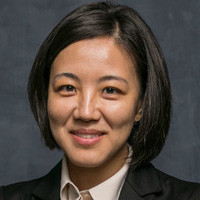In Iran South Korean period TV dramas have become so popular that millions of Iranians organise their mealtimes to avoid missing the shows. In the Philippines Korean-made soaps have proved so popular they’ve been remade in Tagalog.
Even France – a country often seen as traditionally sceptical of outside culture – can’t seem to get enough of Korean-made films and pop music.
Here in Singapore we’ve been kept on the edge of our seat by Korean crime thrillers like “You’re All Surrounded”, tormented by the divorced hospital interns in “Emergency Couple”, and love-struck by the romance of TV’s “Secret Love Affair”.
In the music scene, bands like Girl Generation, BIGBANG and Shinhwa have stormed to the top of YouTube video charts. And there can be few people left in the world who have not seen or heard the catchy beat of PSY’s hit, Gangnam Style.
Welcome to the K-Wave: Korean pop culture going global, sweeping the world (and a teenager near you).
Asian trendsetter
Dubbed ‘hallyu‘ in Korea, these cultural exports have redefined South Korea as Asia’s new epicentre of cool, charging past Japan as the region’s top trendsetter.
In turn they have generated a spill over effect, boosting demand for other Korean products such as fashion, cosmetics, mobile phones, and even automobiles. In Singapore, for example, the rising tide of the K-wave has made Korean cosmetic brands such as Laneige and Etude House wildly popular.
This boom in output means the K-Wave has become a key pillar of the South Korean economy. In 2012 the country’s culture ministry estimated the asset value of hallyu exports at US$83.2 billion. To support the industry the government has put in place a range of tax incentives and funds, including a US$1 billion investment fund to support the pop music industry.
So what can the K-Wave teach Singapore about transforming itself into an innovation-and-creativity-based economy?
South Korea’s global success in pop culture exports lies in their innovation and fusion capabilities. Korean producers search for global resources, integrate elements from various cultures and create a brand new product category with global appeal.
In marketing innovators are category makers. Take the song and dance routine of “Sorry” by Super Junior, “Nobody” by Wonder Girls and the massively popular “Gangnam Style” by PSY. The uniqueness of these performances sets them apart from other songs, creating an entirely new song category.
With the ubiquity of YouTube and other video streaming platforms, Korean producers have learned to invest a lot in their music videos, packing them with unique and vibrant visuals. The larger than life end product allows fans who may not understand the language to still understand the music.
Integrative innovation
A key innovative force at the heart of the K-Wave phenomenon is Seoul-based SM Entertainment, the agency behind such groups as Girl’s Generation and Super Junior.
As well as a talent agency, SM operates as a record label, film producer, music production, event management and concert production firm as well as a music publishing house, all with the aim of creating entertainment products that cut across geographies.
Working with some 500 composers and choreographers around the world, senior SM producers blend music and dance routines with Korean lyrics and other foreign languages; its stylists design the make-up and clothing accordingly; and the end result is a new category of music, dance, and style with global appeal.
This integrative innovation, blending elements from various cultures, demands strong organizational support. SM achieves this by bringing together production, management and distribution to establish an integrated star-making system, allowing SM to take a long-term view on training its artistes, some of whom join SM as young as 10 years old.
Technology is also used innovatively. To launch a new album, a YouTube channel is created to release one song at a time, enabling SM to understand the demographic profile of those who view their songs and importantly, which song. This data allows them to identify consumer preferences and locate market niches.
Promotion is lean – only social media is used – so that with 200 employees and 73 artistes, SM generated revenue of US$253 million in 2014; more than US$1 million per employee or almost US$3.5 million per artiste.
Critical mass
This model offers some interesting lessons for Singapore, most obviously for exploiting our multiethnic profile.
Singapore’s mix of races and cultures should give it huge potential to develop integrative and fusion products with a wide appeal, well beyond our small domestic market. However we have yet to see a critical mass of such fusion, especially of the type that leads to new ideas and products.
For instance, participants in local talent shows such as The Dance Floor are often in groups of the same ethnicity. Yet several research studies in multiethnic European countries have shown that diversity and blending of ideas and cultures is a key ingredient to innovativeness. Groups made of varying ethnicities, for example, tend to spur each other to be more creative.
More needs to be done then to foster deeper integration among our youth across all demographic and cultural lines to generate new ideas.
Second, we need more integration and long-term focus across organizations. Take Silicon Valley for example, where research shows that informal networks among engineers from different companies has been key to creating and sustaining this global innovation hub.
Here in Singapore the push to locate multiple and diverse research institutes in One North is a step in the right direction, facilitating network building, idea exchange, knowledge flow and learning. But in the longer term, willingness to accept failure and perseverance need to be addressed.
High-quality fusion global products frequently encounter short-term challenges. Yet the learning experience from failure and the perseverance that come forth can lead to fruitful outcomes.
Singapore needs to be more tolerant of failures. Our organizations need to allow for failure and learn from such failure to be successful.
Finally, Singapore must work smarter, leveraging its advanced technological infrastructure and making creative use of big data to drive innovation in creative content. By analyzing social media followers and comments for example, as well as product content, demographic fan profiles and content appeal for various audience segments can be identified to develop more targeted and innovative offerings.
Closely imitating K-Wave content is not a path Singapore should follow – Korea already has that sewn up, and imitation is not innovation. Nonetheless there are lessons in approach that we would do well to learn from if Singapore is to realise its cultural potential and thrive as a centre of creativity and innovation.






